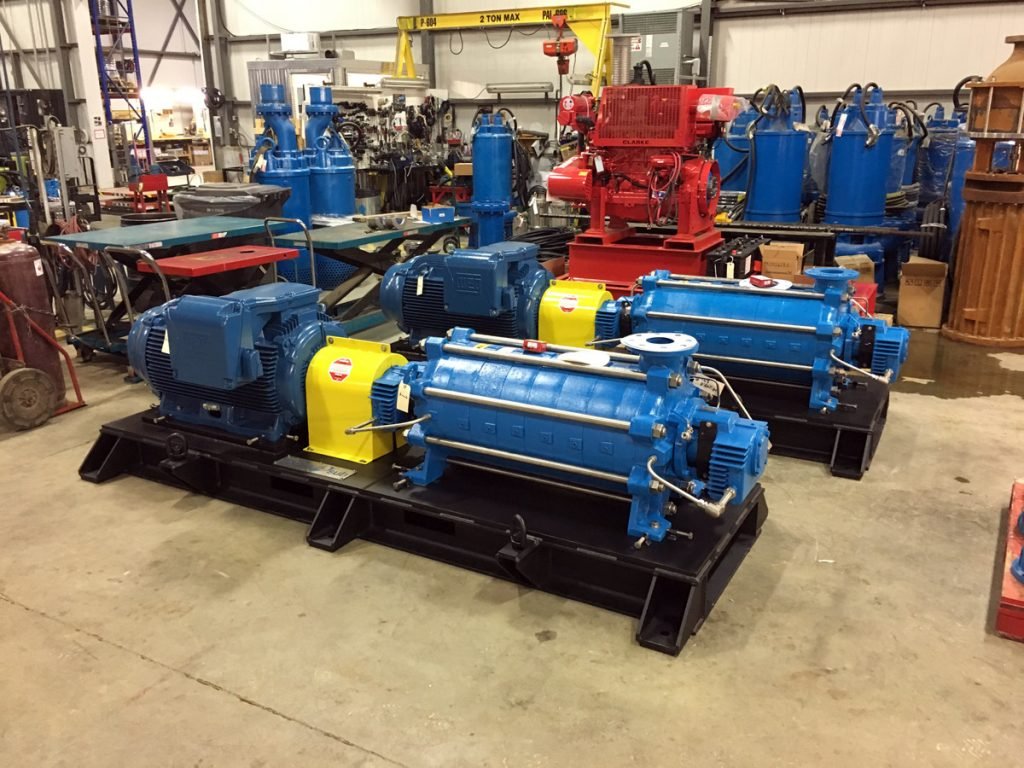Horizontal multistage centrifugal pumps are critical in many industries for their ability to efficiently move fluids over long distances and at high pressures. These pumps are designed to handle a wide range of applications, from water supply systems to industrial processes. They operate using a series of impellers arranged in stages, each contributing to the overall pressure increase. This article delves into the working principles, components, applications, and benefits of horizontal multistage centrifugal pumps, offering a comprehensive understanding for those interested in their functionality and utility.
What is a Horizontal Multistage Centrifugal Pump?
Horizontal multistage centrifugal pumps are a type of pump designed to move liquids through a series of impellers that boost the pressure in multiple stages. Unlike single-stage pumps, which have only one impeller to increase pressure, multistage pumps have several impellers stacked in series within a horizontal casing. This design allows for a significant increase in fluid pressure and flow rate, making them suitable for applications requiring high pressure and flow.
These pumps are horizontally mounted, which means the pump shaft is parallel to the ground. This configuration is beneficial for ease of maintenance and alignment. The multistage design means the pump can handle higher pressures than single-stage pumps, making it versatile for various high-demand applications.
How Does a Horizontal Multistage Centrifugal Pump Work?
The operation of a horizontal multistage centrifugal pump is based on the principles of centrifugal force. The pump contains multiple impellers arranged in series. As the pump shaft rotates, the impellers spin and accelerate the fluid outward, creating a centrifugal force that increases the fluid’s pressure and velocity.
Each stage of the pump consists of an impeller and a diffuser. The impeller adds energy to the fluid, while the diffuser helps convert this kinetic energy into pressure. The fluid flows from one impeller to the next, with each stage contributing to the overall increase in pressure. The horizontal design of the pump allows for a compact and efficient layout, reducing the space required for installation and maintenance.
Key Components of Horizontal Multistage Centrifugal Pumps
Impellers
Impellers are the key components responsible for adding energy to the fluid in a centrifugal pump. In a horizontal multistage pump, multiple impellers are stacked in sequence. Each impeller is designed to increase the fluid’s velocity and pressure. The number and design of the impellers determine the pump’s capacity and efficiency.
Diffusers
Diffusers are fixed components that work in conjunction with impellers. They convert the high-velocity fluid from the impeller into pressure. By slowing down the fluid and directing it into the discharge port, diffusers help maximize the pump’s efficiency. In multistage pumps, each stage includes a diffuser to assist in pressure buildup.
Shaft and Bearings
The shaft is the central component that transmits rotational energy from the motor to the impellers. Bearings support the shaft and ensure smooth rotation. Proper alignment and maintenance of the shaft and bearings are crucial for the pump’s performance and longevity.
Casing
The casing houses all the internal components of the pump, including the impellers and diffusers. It is designed to withstand high pressure and direct the flow of the fluid through the pump. The horizontal design of the casing allows for easier access and maintenance.
Applications of Horizontal Multistage Centrifugal Pumps
Horizontal multistage centrifugal pumps are versatile and used in a wide range of applications. In industrial settings, they are commonly used for transferring chemicals, slurries, and other fluids. In water supply systems, these pumps provide high-pressure water for municipal use and irrigation. They are also essential in HVAC systems for circulating water in heating and cooling processes.
Additionally, these pumps play a critical role in firefighting systems, where high pressure is needed to deliver water to elevated areas or through long hoses. Their ability to handle high pressures and flow rates makes them a reliable choice for these demanding applications.
Benefits of Using Horizontal Multistage Centrifugal Pumps
Horizontal multistage centrifugal pumps offer several advantages. Their high efficiency ensures effective fluid transfer with minimal energy consumption. The multistage design allows these pumps to handle high pressures, making them suitable for demanding applications.
Their horizontal configuration makes them easier to install and maintain compared to vertical pumps. The design also contributes to their durability and reliability, as the components are well-supported and aligned. Additionally, these pumps are versatile and can be used in various industries, making them a valuable asset in both industrial and commercial settings.
Maintenance and Care Tips
To ensure the longevity and optimal performance of a horizontal multistage centrifugal pump, regular maintenance is essential. Routine inspections should include checking for signs of wear or damage, cleaning the components, and ensuring proper alignment. It’s also important to monitor the pump for any unusual noises or vibrations, which may indicate potential issues.
Common problems include leaks, reduced performance, and noise from the bearings or impellers. Addressing these issues promptly can prevent more significant problems and extend the pump’s lifespan. Proper installation and adherence to manufacturer guidelines are also crucial for maintaining pump efficiency.
Choosing the Right Horizontal Multistage Centrifugal Pump
Selecting the right horizontal multistage centrifugal pump involves considering several factors. These include the required flow rate, pressure, and the type of fluid being pumped. It’s essential to match the pump’s specifications with the application’s demands to ensure optimal performance.
Assessing the pump’s material compatibility with the fluid is also crucial, as certain fluids may require specific materials to prevent corrosion or damage. Consulting with pump experts or manufacturers can help in choosing the most suitable pump for your needs, ensuring reliability and efficiency.
Conclusion
Horizontal multistage centrifugal pumps are essential tools for applications requiring high pressure and efficient fluid transfer. Their design, which includes multiple impellers and a horizontal casing, provides both versatility and reliability. Understanding their components, benefits, and maintenance needs helps in selecting and using these pumps effectively. By choosing the right pump and following proper care guidelines, you can ensure optimal performance and longevity for your specific applications.



